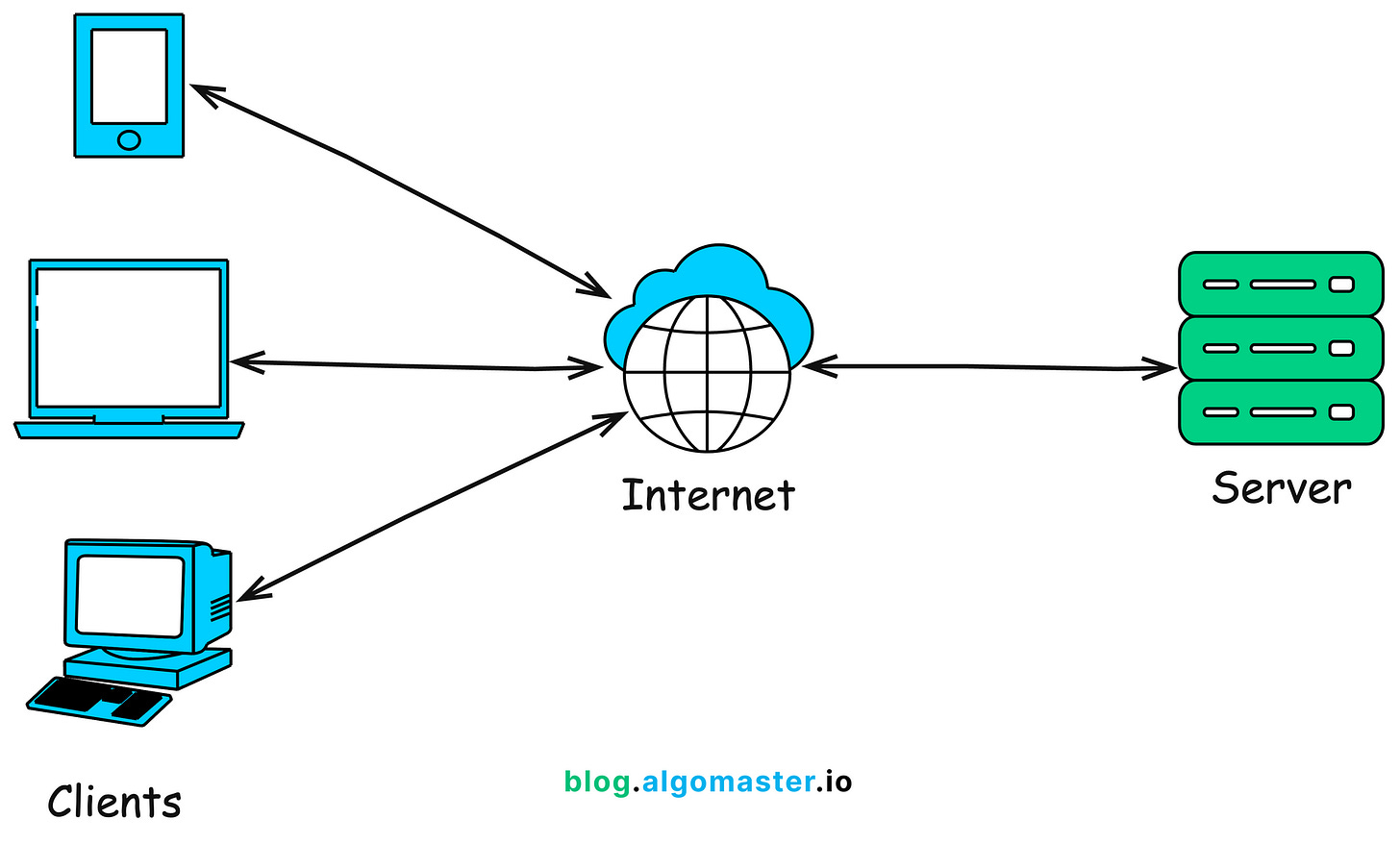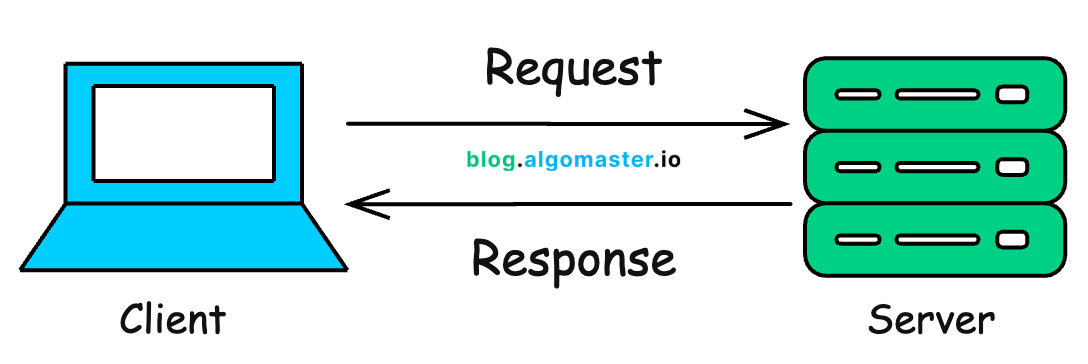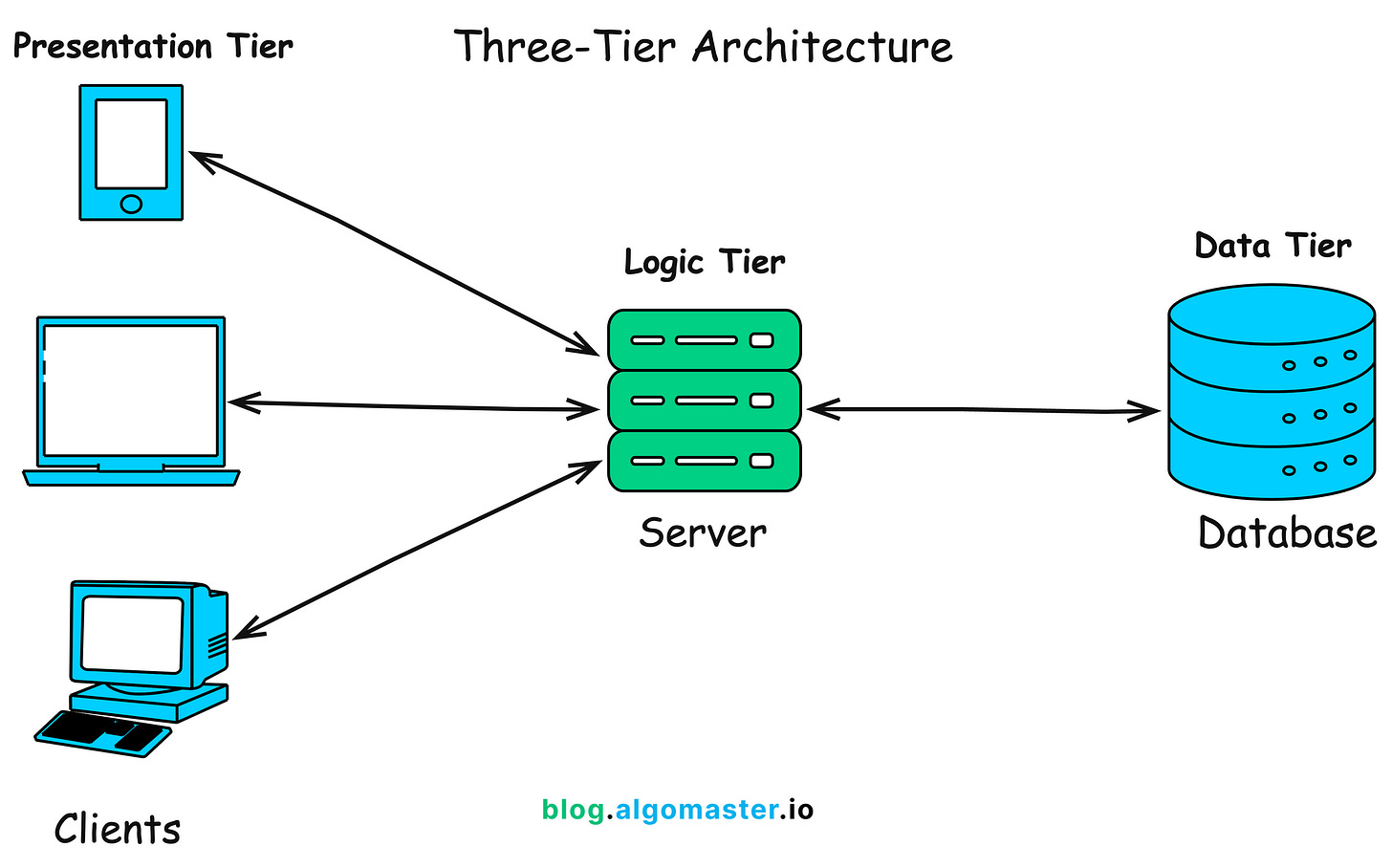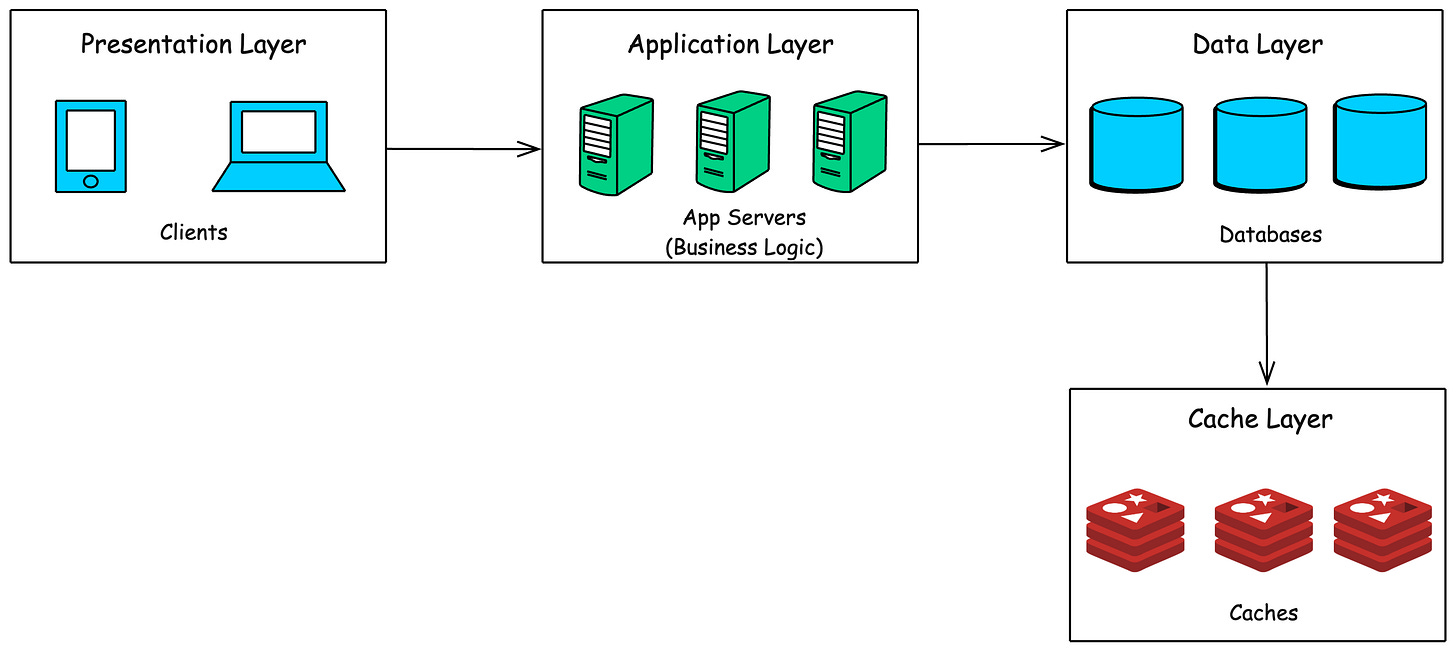Client-Server Architecture Explained
Every time you're browsing your favorite website, streaming a show, or sending an email, you’re interacting with a system designed around the client-server model.
This model is the backbone of modern computing. It defines how our devices (clients) talk to powerful machines (servers) across the internet to fetch data, deliver services, and keep everything running smoothly, often in just milliseconds.
In this article, we’ll break down:
What exactly Client-Server Architecture is
How the communication between clients and servers actually works
The different types of client-server models
The pros, cons and real-world applications of this architecture
1. What is Client-Server Architecture?
Client-server architecture is a computing model in which multiple clients (users or devices) interact with a centralized server to access data, resources, or services.
In this model, the client initiates requests (like fetching data or performing an action), while the server handles those requests, manages resources, and responds accordingly, often serving multiple clients at the same time.
Key Components:
Client: The client is typically a device or application that initiates a request to the server. This could be a web browser, a mobile app, or a desktop application.
Server: The server is a powerful computer or software application that processes requests from clients, manages resources, and delivers the requested services or data.
Network: The communication medium (usually the internet) that allows clients and servers to exchange data.
Example: Visiting a Website
Let’s say you type
algomaster.ioin your browser:
Client → Browser sends a request to
algomaster.io's web server over HTTP/HTTPS.Server → Finds the HTML, CSS, and JS files and sends them back.
Client → Browser displays the page based on those files.
2. How Client-Server Architecture Works
How does your browser know what to show when you type in a URL?
Or how does your Spotify app pull in your favorite playlist in seconds?
It all comes down to how clients and servers talk to each other.
Let’s walk through it step by step.
The Client Initiates a Request: You (the client) perform an action like clicking a link, pressing “Send” on an email, or opening an app. That action triggers a request to a server.
The Request Travels Over the Network: This request usually in the form of an HTTP message is sent over the internet to a server’s IP address. Think of it like mailing a letter to a specific address.
The Server Receives and Processes the Request: The server listens on a specific port and handles incoming requests. It processes the data, runs logic, queries a database if needed, and prepares a response.
The Server Sends Back a Response: Once processing is done, the server sends the result back. This could be:
A webpage
Search results
A confirmation message
JSON data for a mobile app
The Client Displays the Response: The client receives the response and renders it on screen. What you see in your browser or app is the result of this back-and-forth.
Key Technologies Involved
Here are some of the technologies that enable this communication:
HTTP/HTTPS: The most common protocol used by browsers and web servers for communication.
DNS (Domain Name System): Translates human-friendly domain names (like
algomaster.io) into server IP addresses.TCP/IP: The underlying protocol that ensures data packets are delivered reliably between client and server.
Ports: Servers listen on specific ports (like 80 for HTTP or 443 for HTTPS) to accept requests.
3. Types of Client-Server Architectures
Client-server systems can vary significantly in complexity based on how many layers (or "tiers") are involved in processing and delivering data.
Let’s explore the most common models from the simplest one-tier setup to sophisticated, multi-tiered architectures used in large-scale applications.
1-Tier Architecture (Monolithic Model)
In 1-tier architecture, everything—the user interface, business logic, and data storage—resides in a single layer. All operations are handled on the same machine or within the same application.
Example Use Cases:
Microsoft Excel
Personal finance tools that store and compute everything locally
Pros:
Simple to build and deploy
No network communication overhead
Cons:
Not scalable
No separation of concerns
Unsuitable for multi-user environments
Best suited for small, standalone, offline applications.
2-Tier Architecture
In a 2-tier architecture, the system is split into two parts:
The client, which handles the presentation layer (UI)
The server, which handles both the business logic and data storage
In a two-tier architecture, the client directly communicates with the server to send requests and receive responses. The server runs the logic and interacts with the database to return results.
Example Use Case:
A desktop application that connects directly to a central database to retrieve and display data.
Pros:
Simple and fast for a small number of users
Easy to implement
Cons:
Poor scalability as more clients are added
Performance bottlenecks on the server
Difficult to update logic across different clients
Suitable for internal tools or apps with a small user base and limited traffic.
3-Tier Architecture
The 3-tier architecture introduces a dedicated Application Layer (also called the business logic layer) between the client and the data server.
This creates a clear separation of concerns and is the most commonly used architecture for modern web and enterprise applications.
Client (Presentation Layer): The front-end interface users interact with (e.g., a browser or mobile app).
Application Server (Logic Layer): Processes client requests, applies business rules, and interacts with the database.
Database Server (Data Layer): Handles storage, retrieval, and management of data.
Example: A web application where the client (browser) interacts with a web server (application server) that then queries a database server to retrieve data.
Pros:
Better scalability and maintainability
Logic is centralized, so clients are lightweight
Improved security and abstraction
Cons:
More complex than 1- or 2-tier setups
Slightly increased latency if layers aren't optimized
Ideal for web apps, SaaS products, and large internal tools.
N-Tier Architecture
N-tier architecture builds on the 3-tier model by adding specialized layers for specific responsibilities such as caching, load balancing, authentication, analytics, or API gateways.
Each layer focuses on one concern and communicates only with adjacent layers, enabling high modularity and scalability.
Common Layers:
Client: User interface or front-end application.
Presentation Layer: Manages the user interface and presentation logic.
Application Layer: Handles business logic and rules.
Data Layer: Manages data access and storage.
Additional Layers (optional): For caching, logging, security, etc.
Example: A large e-commerce platform with separate services for user authentication, product catalog, shopping cart, and payment processing might use an N-tier architecture.
Pros:
Highly scalable and fault-tolerant
Individual layers can be developed, deployed, and scaled independently
Supports complex workflows and distributed teams
Cons:
More difficult to design, maintain, and debug
Higher latency if not optimized
Requires strong DevOps and monitoring practices
Best for enterprise-grade systems, cloud-native apps, and services that serve millions of users.
4. Advantages of Client-Server Architecture
The client-server model offers several advantages, which is why it’s so widely used:
Centralized Management: All critical data, resources, and services reside on the server, which means they can be monitored, updated, and secured from a central location.
Scalability: Client-server systems are built to grow. You can scale vertically by upgrading server hardware (e.g., adding more RAM or CPU) or scale horizontally by adding more servers behind load balancers to distribute traffic.
Efficient Resource Sharing: One server can serve multiple clients simultaneously, enabling shared access to databases, file storage, and applications.
Security: With everything centralized, it’s easier to implement and enforce authentication, authorization, encryption, and access control.
5. Challenges and Considerations
Despite its advantages, client-server architecture also has some challenges:
Single Point of Failure: If the central server crashes or becomes unavailable, all connected clients lose access. Redundancy, replication and failover mechanisms are needed to mitigate this risk.
Performance Bottlenecks: As the number of clients grows, the server can become overwhelmed, leading to slow response times or system outages. Load balancing, caching and other optimizations are required to maintain performance.
Complexity: As systems grow, managing and scaling a client-server architecture can become complex, requiring advanced infrastructure and expertise.
6. Real-World Applications
Client-server architecture is ubiquitous in modern computing. You interact with it dozens of times a day, often without even realizing it.
Here are a few examples of real-world applications:
🌐 Web Browsing
When you visit a site like www.wikipedia.org, your browser (client) sends a request to a web server, which responds with the HTML, CSS, and content of the page.
📧 Email Services
Email apps like Gmail, Outlook, or Apple Mail act as clients that connect to mail servers (using protocols like SMTP, IMAP, or POP3) to send, receive, and sync your emails.
🏦 Online Banking
Banking apps and websites rely on client-server models to:
Authenticate users
Process transactions
Display real-time account data all while keeping data encrypted and secure on the server.
☁️ Cloud Computing
Cloud providers like AWS, Google Cloud, and Microsoft Azure offer on-demand services (compute, storage, databases) using a client-server model. Your apps (clients) communicate with cloud APIs (servers) to scale seamlessly.
Thank you for reading!
If you found it valuable, hit a like ❤️ and consider subscribing for more such content.
If you have any questions or suggestions, leave a comment.
P.S. If you’re enjoying this newsletter and want to get even more value, consider becoming a paid subscriber.
As a paid subscriber, you'll unlock all premium articles and gain full access to all premium courses on algomaster.io.
There are group discounts, gift options, and referral bonuses available.
Checkout my Youtube channel for more in-depth content.
Follow me on LinkedIn, X and Medium to stay updated.
Checkout my GitHub repositories for free interview preparation resources.
I hope you have a lovely day!
See you soon,
Ashish






